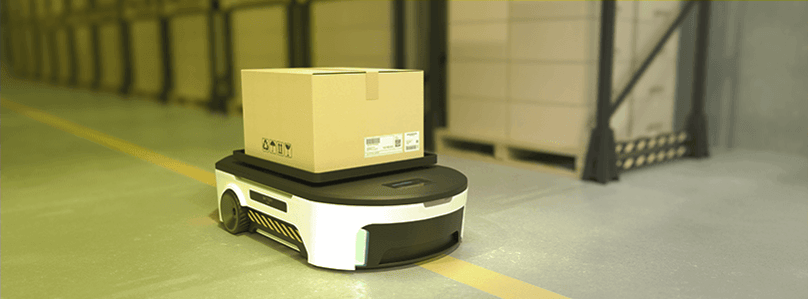The Droids are Pushing Us Forward

The Star Wars bar scene feels much closer to home when you consider how many co-workers are in fact robots. Industries and functions for robots are broadening and the benefits are proving too great to ignore.
It is much more commonplace to think about robots in an industrial setting. Solid and precise arms are known for manufacturing and assembling impressive products like cars, medical devices, home appliances and others. Today, the reputation of the accuracy and efficiency of industrial robots has spread into different fields and is being leveraged for other types of tasks.
Robotics for Warehousing and Logistics
In the year 2021, the warehouse automation market was expected to grow by almost 40%. Was this a reaction to global shutdowns because of COVID-19? Most likely, but it’s not a simple trend. The industry is growing quickly and by 2025, it is anticipated that over 4 million robots will be installed in over 50,000 warehouses around the world. There is a variety of tasks that robots can manage and do them with the efficiency of a well-oiled machine (pun intended).
Robotic Roles around the Workplace
What humans can do; robots can do. There are few limitations when looking at a warehouse environment. Think about product handling as a first example. Robots can come in a variety of sizes and are used to manipulate products, boxes, or complete pallets. With a built-in ADAS system they can navigate their way around the factory without any assistance from a driver.
Oh, the Places you will Go.
80% of the American population shop online. With same-day or next-day delivery services like Amazon Prime, each order is getting smaller in quantity and in value. When you consider how many bars of deodorant and boxes of cookies must get requested every day, delegating order-picking to a robot is a dream. The speed to navigate these aisles alone would require Top Gun abilities. Warehouses can be enormous, both high and wide. This means that for a person to get around, they not only have to get around different sections and bring products back for processing; these people will constantly be going up and down ladders, etc.
A robot can step in in different ways. Sometimes a person may be available in designated sections to scan a product and place it on a robot to be brought back for processing. Sometimes the robot can do the job from top to bottom using vision inspection. For those pesky, hard-to-reach shelves, some factories have brought in drones to just zoom up and grab them with a picker. Pretty cool.
Packing, Sorting and Shipping
Why stop at the warehouse alone? The job is not done yet. Once the product is collected, a box must be built, the product needs to be packed and then properly labelled to be sent on its way. Why not have a robot do it?
The Benefits of Warehouse Automation
These tasks have been performed by people for decades, and it works. Why bother with such an extreme adaptation? When automation is implemented in any application, all of the same benefits apply. It doesn’t matter if it’s a fully automated test system or a drone window washer, automation speeds up processes, performs tasks with precision, improves quality by eliminating human error and reduces overall costs as a result.
A common fear can be that if these tasks can be replaced by robots, will there be jobs for humans? The answer is and has always been yes. As we begin the fourth industrial revolution, this is not the first time we are faced with change, and we have always come out ahead. When considering the after effects the COVID-19 pandemic had on businesses and people around the world, you have to wonder how robots could have helped.
For questions on factory or general automation, please contact Averna.
You may also be interested in…

See how our advanced handling solutions deliver fast results with
supreme accuracy!
Get in touch with our experts or navigate through our resource center.